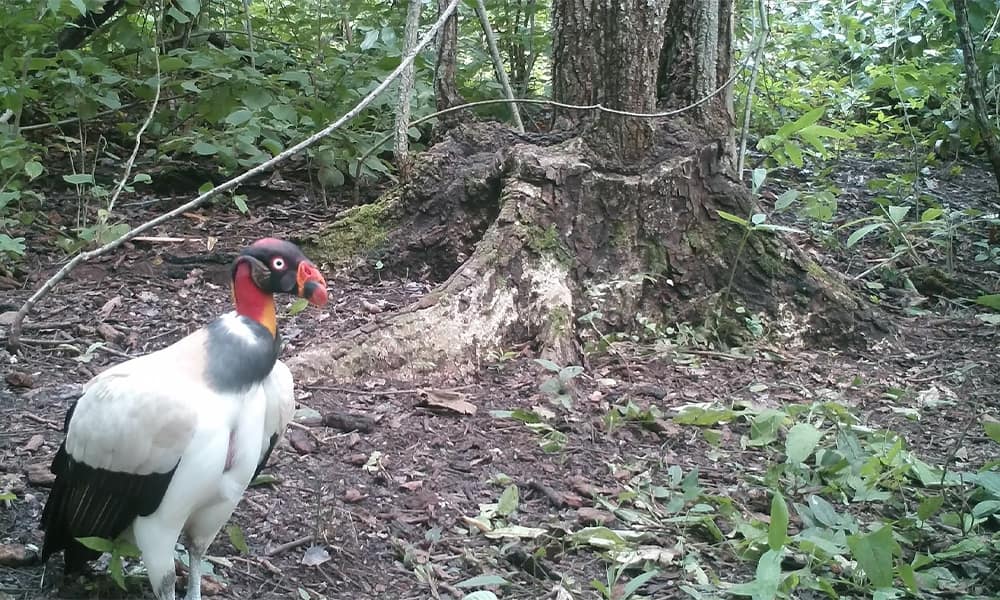Costa Rica is famous for its diversity of birds. Of the many hundreds of species of birds found throughout the country, vultures are probably towards the back of the line when it comes to the list of bird lovers’ favorites. But that changes today when I introduce you to the king vulture, Costa Rica’s fanciest vulture.
There are four species of vulture that call Costa Rica home. All four species have a lot in common. They spend most of their time soaring through the skies, they eat dead stuff and they lack feathers on their head and neck. They king vulture does all of that, but with style.
The king vulture’s name in Spanish is zopilote rey (so-pee-low-te ray) which translates to king vulture. So, both languages agree that they are the king of the vultures. They earn their name by being bigger than all of the other vultures in Costa Rica. They come in at 32 inches tall, between 6 and 10 pounds, with a wingspan of up to 7 feet. They’re big birds.
They throw this weight around when it comes to feeding time. Often after an animal has met its maker, several individuals from several species of vulture will meet to dine together. When the king vulture arrives, with his impressive bulk, the other vultures clear a path. The king eats first. Sometimes this actually benefits the smaller vultures.
King vultures possess the strongest bill of the group, equipped with a hooked tip and a sharp cutting edge, giving them the ability to rip into the tough hide of their deceased meal, leaving an opening that the others can use when the king is full.
Besides being huge, the other leading attribute of the king vulture is that it’s awesome looking. I’m going to say it, generally vultures are ugly. I think it’s the fact that we all know they eat stinky, dead stuff and the all-skin, no-feathers head that they sport.
The king vulture breaks that mold. First, it’s mostly pure white, which is weird for vultures because they’re generally black. Second, it dazzles with its insanely colorful head. Yes, its head is featherless, but it makes up for it with all of the colors and interesting skinfolds.
The adult king vulture’s head is a mix of bright yellows, oranges, reds and purples, topped off with a fun orange waddle and a big piercing white eye with a contrasting black pupal. In short, they’re beautiful.
You may not have been lucky enough to see one, because there just aren’t that many of them in Costa Rica. While they’re present nationwide, they’re generally rare. They seem to prefer the wildest sections of the country, most notably the Osa Peninsula. I have had the good fortune of seeing king vultures in the wild a handful of times.
Once I saw a group of three sitting together in a tree near Tenorio Volcano National Park. The old campesino I was with said in all of his years in the forest, that was the first time he’d seen more than one together.
I’ve recorded king vultures with my camera traps exactly once. A few years ago I found a very stinky, very dead something or other in the forest. I placed a camera trap at the site and recorded hundreds of videos of black vultures chowing down. A king vulture showed up late, missing the whole meal, but he (or she) took a moment to pose perfectly for my camera. Take a look at the video clip below.
About The Author
Vincent Losasso, founder of Guanacaste Wildlife Monitoring, is a biologist who works with camera traps throughout Costa Rica. Learn more about his projects at: Instagram and facebook or by email.

